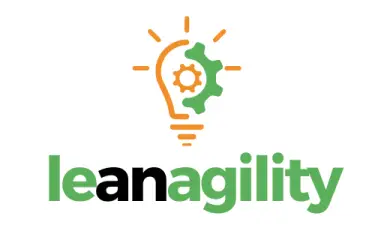Kanban 101 - What is Kanban?
Does your process suffer from lack of effectiveness, efficiency, and/or predictability? That’s where Kanban can help!
Kanban is fast becoming the modern way to manage an organization’s delivery of customer value. In today’s always-on environment, you need a clear set of practices that don’t hinder your ability to deliver continuously but that provide enough structure to keep everyone aligned and focused.
Kanban is truly a game-changer. Implementing it as a strategy will assist you in:

Becoming more Effective

Becoming more Efficient

Becoming more Predictable

Improving Customer Satisfaction

Delivering more Value

Improving Time-to-Market
A Four Letter Word
What Kanban is really about is a 4-letter f-word: FLOW. It is the flow that ensures that we are able to deliver value continuously to our customers. It is the observation of problems in flow that help us retrospect and improve the process.
It is the active management of flow that ensures that the system does not break down, and if it does break, we learn how to recover. Kanban can be used to expose the flow (or lack thereof) of work at any level of the organization. The simplest examples being people using personal Kanban to reduce their WIP and increase both focus and flow. The most complex examples are large companies managing their entire portfolio of products on a single board.
In every example of Kanban, we are focussed on the same thing – FLOW. We are visualizing, managing and improving the flow of value to our customers. Kanban is a strategy to become more efficient, effective and predictable with your flow. Visualizing your work, paying attention to your metrics, creating and adjusting your policies are all in service of FLOW.

Myths and Misunderstandings
There are numerous myths around what exactly Kanban is.
Myth #1: Kanban is a visual work tracking system.
The most common one being that it is a visual work tracking system – If you put a bunch of post-its on a white board or some virtual cards on an electronic board, you are doing Kanban. This is a myth that is easily debunked once people see an actual Kanban system in action. A well-defined Kanban system is one where items of value flow through workflow stages, actively managed to ensure fast feedback. This includes not just feedback on the value items but also feedback on the process itself. Kanban is a strategy for learning what is not working well as quickly as possible.
Myth Busting: Kanban is much more than a board!
Myth #2: Kanban is all about charts and metrics.
Once you get past the “stickies on a board” myth, folks quickly move on to “Kanban is all about charts and metrics”. Wrong! Kanban is, about using the information that your system is producing to continuously improve that system. It is ensuring that we are able to get work done while balancing efficiency, effectiveness and predictability. All the charts and metrics in the world will not help you if you are not taking advantage of them to continuously improve your system. It is this relentless pursuit of improvement that makes a Kanban system stand out.
Myth Busting: Kanban is offering superb and actionable metrics but they are not the main point of its application. Charts and metrics are a reflection of the Kanban system’s current health and performance and will help inform decisions about how value gets delivered.
Myth #3: Kanban is only for certain types of work.
Another common myth is that Kanban is only for certain types of work. We would argue that Kanban can be applied to enhance any system where value is being delivered to a customer. If there is an idea, or some raw material which needs to go through one or more steps in order to become valuable to a customer, you can most likely apply Kanban. You can apply Kanban to green field projects, maintenance work, education, marketing, building cars, planning a wedding, assembling furniture…almost anything.
Myth Busting: Wherever there is some value being delivered – Kanban can (and should) be applied! You can even use it for personal purposes.
Kanban is compatible with any framework or methodology. It can help you optimize your value delivery in all contexts. Our students already applied it to:

Traditional Project Management

Agile Ways of Working

Scrum
Framework

Maintenance and Support Work

New Product Development

Scaling Frameworks (SAFe, LESS, etc.)
One of the best aspects of Kanban is its compatibility with any process, framework, or methodology. Whether you are dealing with traditional project management, Agile development, Scrum, SAFe, or some other scaling framework, Kanban seamlessly integrates into your practices, enhancing your team’s speed, effectiveness, and predictability. You can even utilize it to track initiatives, goals, and OKRs at the organizational or portfolio levels.
Whether you are developing new products or working on system maintenance and support, Kanban will enhance your value delivery, ensuring your users are satisfied and your estimates become accurate and reliable. You’ll never again be late with a delivery or have to postpone a release date due to overly optimistic plans or inefficiencies during implementation. You will finally be able to confidently answer the favorite question of your boss and stakeholders: “When will it be done?”
“In God we trust. All others must bring data.”
One of the greatest advantages of Kanban compared to other strategies and ways of working is its focus on flow metrics. With Kanban, you gain insight into actionable metrics that you can utilize to continuously enhance and optimize the system in response to changes and new circumstances you encounter. Every improvement decision you make will be evidence-based. Forget about story points, velocity, burn-down charts, and other nebulous metrics that are unreliable and often do more harm than good. Kanban offers a much superior alternative!
Your daily meetings, planning sessions, and retrospectives will elevate to a much higher standard. No more empty discussions or team conversations that yield no results. And what about your relationship with superiors? Well, few things delight bosses and stakeholders more than data! Collaborating with them will undergo a radical transformation once you begin leveraging meaningful data and presenting solid evidence instead of relying on Jira reports and compiled spreadsheets.
Still skeptical? Let’s examine flow metrics in action:
Data-driven strategy. How cool is that?
Of course, if you carefully read the section on the most common myths, you already know that the belief that Kanban is solely based on charts and metrics (no matter how great they are) is completely wrong. The greatest strength of the Kanban system is you! It’s the smart and dedicated people who utilize these excellent practices and data to continuously enhance the system, deliver value, and ensure customer satisfaction. That is why it is truly regrettable not to delve deeper into all these details that will forever transform the way your teams work. The opportunity to make a real impact in your field and organization has never been closer. You deserve to achieve great results and demonstrate your true worth. And we are here to assist you in achieving that.







